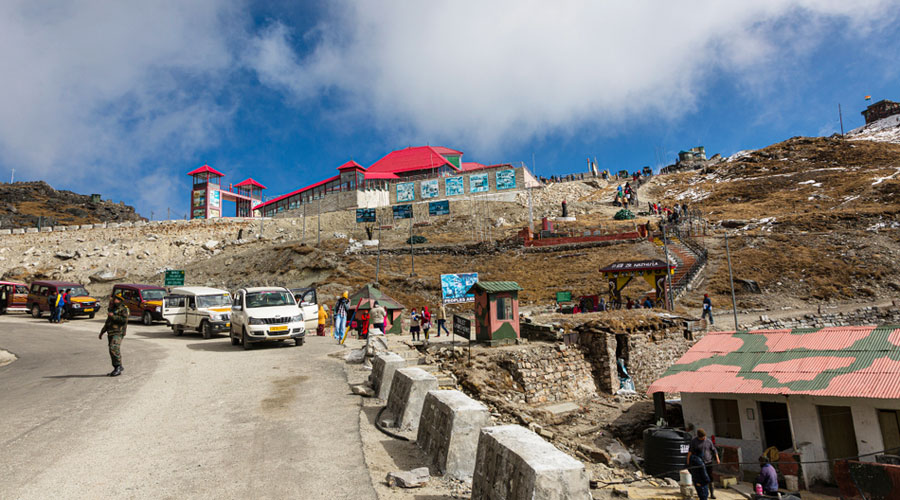
Indian and Chinese troops clash in Sikkim - on January 20 Several soldiers from both sides were injured
Several soldiers from both sides were injured in the incident, termed 'minor' by the army

Several soldiers from both sides were injured in the incident, termed “minor” by the army, which comes amid an eight-month-old border standoff in eastern Ladakh that began with the Chinese intruding into India-claimed territory.
Naku La had witnessed a similar brawl on May 9 last year, four days after a fists-and-stones battle between Indian and Chinese troops at the Pangong Lake had kicked off the eastern Ladakh standoff.
Both May scuffles had resulted from attempted Chinese intrusions but the Naku La tensions were quickly doused after talks between the local commanders of the two armies, officials said.
Sources in the security establishment leaked the news of the January 20 fracas in Sikkim just a few hours after 16-hour-long military talks to defuse the tensions in eastern Ladakh ended without any breakthrough at 2.30am on Monday.
Soon after, India’s army issued a brief statement terming the Sikkim exchange a “minor faceoff”. It did not explain what led to the hand-to-hand fight at an altitude above 15,000 feet, or reveal how many were injured on either side.
“We have received several queries regarding a faceoff between Indian Army and PLA troops in the Sikkim sector,” the army statement said.
“It is clarified that there was a minor faceoff at Naku La area of north Sikkim on January 20 and the same was resolved by local commanders as per established protocols. Media is requested to refrain from overplaying or exaggerating reports which are factually incorrect.”
A security official attached to the Union home ministry said: “The PLA troops tried to cross the border and were challenged by Indian soldiers. A heated argument took place, leading to a scuffle that injured several soldiers of both armies.”
He said the initial reports suggested the injuries were minor. “The situation is tense,” he said.
“Injuries were reported on both sides. The situation is under control now,” an army official said.
After a meeting between the local commanders the official disengagement took place in the shape of a customary banner drill, during which both sides held up banners before marching back to their respective positions.
Transgressions and border skirmishes are not uncommon along the 3,488km-long, disputed border between India and China. The site of the January 20 clash is near Doklam, a plateau at the tri-junction of the two countries’ borders with Bhutan, where their troops had been locked in a standoff in 2017.
The defence ministry issued a statement late on Monday night on the ninth round of military talks with China, which stretched from 10.30am on Sunday to the early hours of Monday.
Like all the Indian statements issued after talks with China over the past few months, it contained no references to any demand for the restoration of status quo ante – a trend military veterans have repeatedly deplored.
Fear is growing in the security establishment that the Chinese are working to establish a “revised status quo” that will allow their army to hold on to its newly acquired positions within India-claimed lines.
“The two sides agreed that this round of meeting was positive, practical and constructive, which further enhanced mutual trust and understanding. The two sides agreed to push for an early disengagement of the frontline troops,” the defence ministry statement said.
“The two sides agreed to continue their effective efforts in ensuring the restraint of the frontline troops, stabilise and control the situation along the LAC in the western sector of the China-India border, and jointly maintain peace and tranquillity.”
Indian and Chinese troops are locked in a faceoff at multiple points in eastern Ladakh, such as the Pangong Lake, Hot Springs and the Depsang Plains, with 21 rounds of military and diplomatic talks having yielded little result.
The Chinese are estimated to have taken over close to 1,000sqkm of India-claimed territory. Sources said the Chinese army has been increasing troops and strengthening its positions in the friction points, violating a September agreement by both sides not to send more troops to the frontlines.
India too has engaged in mirror deployment, establishing habitat facilities for 50,000 additional troops backed by battle tanks, missile systems and frequent air force sorties.


0 Response to "Indian and Chinese troops clash in Sikkim - on January 20 Several soldiers from both sides were injured"
Post a Comment
Disclaimer Note:
The views expressed in the articles published here are solely those of the author and do not necessarily reflect the official policy, position, or perspective of Kalimpong News or KalimNews. Kalimpong News and KalimNews disclaim all liability for the published or posted articles, news, and information and assume no responsibility for the accuracy or validity of the content.
Kalimpong News is a non-profit online news platform managed by KalimNews and operated under the Kalimpong Press Club.
Comment Policy:
We encourage respectful and constructive discussions. Please ensure decency while commenting and register with your email ID to participate.
Note: only a member of this blog may post a comment.